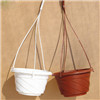Introduction: Repotting is an essential aspect of plant care that promotes healthy growth and vitality for your potted plants. Whether your plants have outgrown their current pots or need fresh nutrients, repotting provides them with the space and resources they need to thrive. In this blog, we share valuable repotting tips to ensure your plants continue to flourish.
- Observe Plant Growth: Keep an eye on your plants and look for signs that indicate they need repotting. If the roots are growing through the drainage holes or becoming tightly packed in the pot, it’s time for a larger container. Wilting, slow growth, or yellowing leaves may also indicate that repotting is necessary.
- Choose the Right Pot Size: Select a new pot that is one size larger than the current one. Avoid choosing a pot that is too large, as this can lead to overwatering and root rot. A pot with a diameter 1-2 inches larger than the current one provides enough space for the roots to spread and establish.
- Proper Timing: Spring is generally the best time to repot most plants when they are actively growing. Avoid repotting during the dormant winter months, as plants are more susceptible to transplant shock during this time.
- Prepare the New Pot: Before repotting, ensure the new pot is clean and has drainage holes to prevent waterlogging. Place a small layer of fresh potting mix at the bottom of the new pot to provide a nutrient-rich foundation for the plant.
- Gently Remove the Plant: Carefully remove the plant from its current pot, supporting the root ball with one hand while gently easing it out of the container. Be cautious not to damage the roots during the process.
- Loosen the Roots: Gently loosen the roots with your fingers, especially if they are circling the root ball. This encourages the roots to grow outwards into the new potting mix.
- Add Fresh Potting Mix: Fill the new pot with fresh, well-draining potting mix. Position the plant in the center of the pot and fill in the remaining space with potting mix, ensuring the plant is at the same level as before.
- Water and Care: After repotting, water the plant thoroughly to settle the soil around the roots. Place the plant in its usual location and continue regular care, adjusting watering as needed for the first few weeks after repotting.
Conclusion: Repotting is a crucial practice to ensure the healthy growth and vitality of your potted plants. By observing plant growth, choosing the right pot size, repotting at the appropriate time, and following proper repotting techniques, you provide your plants with the space and resources they need to thrive. Embrace repotting as a valuable aspect of plant care, and you’ll be rewarded with vibrant and thriving plants that bring beauty and joy to your living spaces.


















